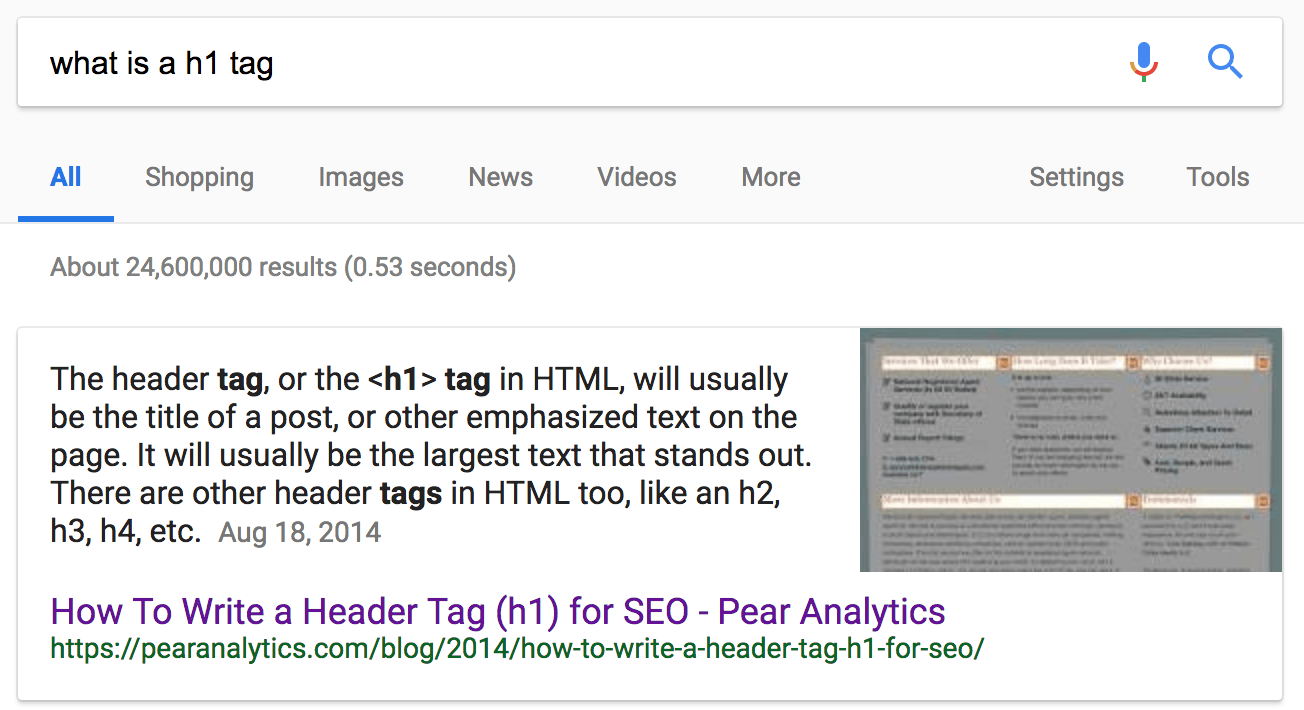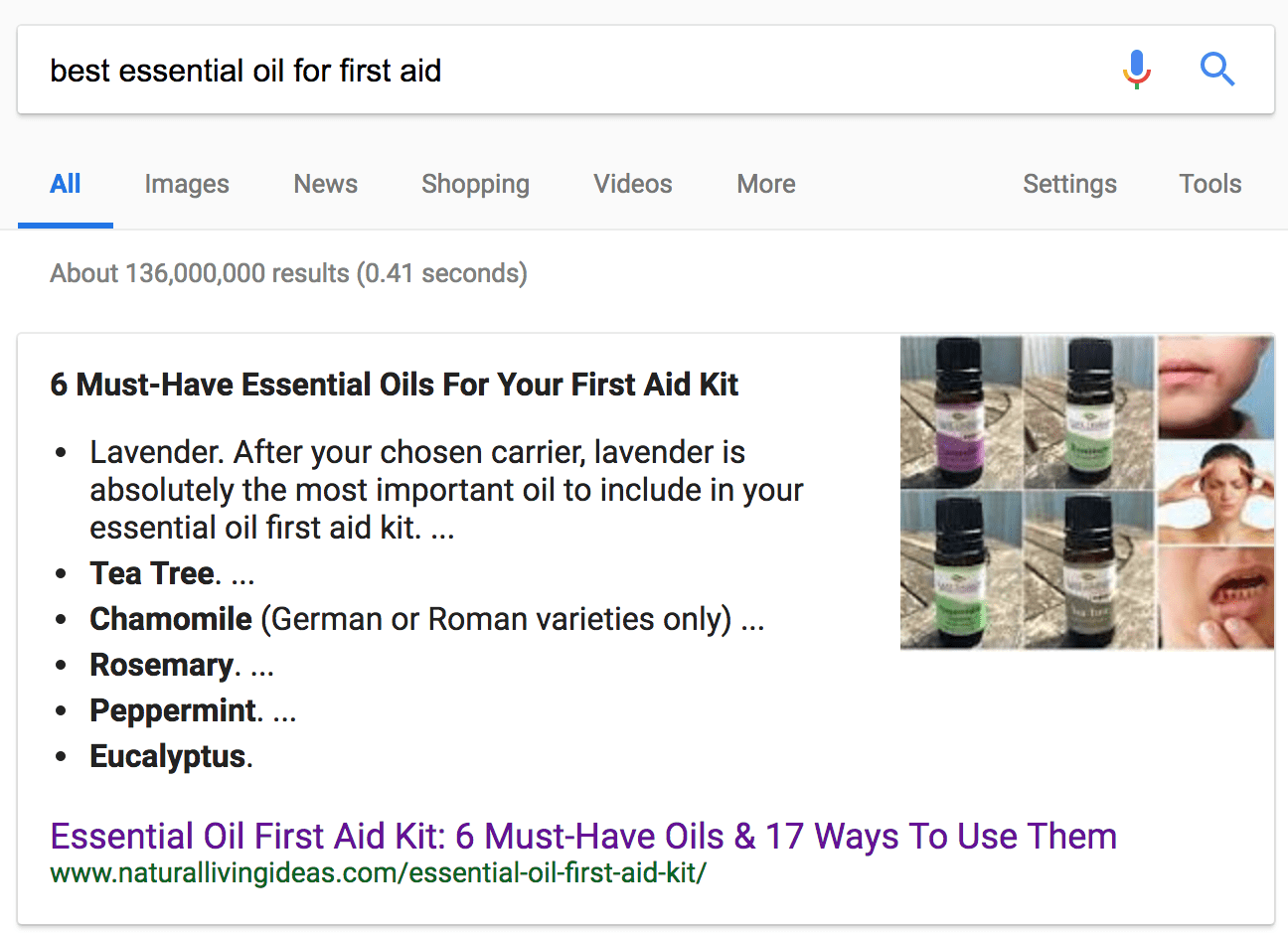Like many SEO meat-and-potatoes tactics, there’s no denying that header tags aren’t as critically important for your site rankings as they used to be.
However, there’s no denying that these tags still serve an important function – for your users and your SEO. They can indirectly influence your rankings by making your content easier and more enjoyable for visitors to read, and by providing keyword-rich context about your content for the search engines.
If you want to call yourself an SEO with a straight face, you can’t afford not to optimize your header tags. Here are seven header tag best practices for SEO.
1. Use Headers to Provide Structure
Your header tags provide structure and context for your article. Each header should give the reader an idea of the information they can glean from the paragraph text that follows below.
A helpful way to think of header tags is by comparing them to a table of contents for a non-fiction book:
- Your H1 introduces the topic your page is all about, just as a title tells a reader what a book is all about.
- The H2s are akin to book chapters, describing the main topics you’ll cover in sections of the article.
- Subsequent headers, H3s to H6s, serve as additional sub-headings within each section, just as a book chapter may be split up by multiple sub-topics.
Using this post as an example, the H1 is the title of the article. The H2s are the seven “chapters” of this article, all related to the main theme.
2. Use Headers to Break Up Text
A scannable article is a readable article, and a readable article is one that’s more likely to perform well in the search engines.
Scannability is so important to the success of an article, that publications like Forbes have gone so far to call it “the most overlooked factor of content marketing.”
The data backs up these claims. Only 16 percent of internet users read an article word-for-word. The rest are scanning.
People simply like scannable content. According to the same research, an article that’s scannable is 58 percent more likely to perform better with readers.
When an article is scannable, users might actually stick around to read it, instead of bouncing back to Google. Plus, they’ll also be more likely to share it with their friends.
While social signals aren’t a direct ranking factor, the more an article is shared, the more likely it is to naturally earn backlinks, which are a ranking factor.
3. Include Keywords in Your Header Tags
While headers are not going to have as large an impact on your SEO as a backlink from an authoritative site, Google still looks at them to gather context for your page.
As with anything Google pays attention to, that means it’s worth including keywords in your header tags.
This does not mean you should shoehorn keywords in at all costs. Be judicious, not spammy.
You’ll note that many of the header tags in this article contain keywords, but not all of them do.
Your page should be readable first and foremost, and naturally include keywords.
Design for users, then make tweaks to optimize for Google – without sacrificing the user experience.
Increasingly, SEO professionals are finding that good UX translates to good SEO.
4. Optimize for Featured Snippets
One place where header tags do seem to make a positive impact on SEO is with featured snippets – in two particular ways:
For example, Pear Analytics scored this featured snippet for “what is a h1 tag?” when Google pulled the paragraph of text beneath their keyword-optimized H1.


And here’s an example for the list scenario.
Search for “best essential oil for first aid,” and Google creates a list of answers using the H3s from the Natural Living Ideas blog.


5. Only Use One H1
Let’s dispel a common SEO myth.
Google has said there is no problem with using multiple H1s.
As many as you want.
— John ☆.o(≧▽≦)o.☆ (@JohnMu) April 12, 2017
However, that doesn’t mean it’s an SEO best practice to use multiple H1s on a page.
Why not?
H1s are big, and they look like titles to readers. Use multiple H1s on your page, and it starts to look a little out of control.
Want to make sure you don’t have any multiple H1s lingering on your site?
Run your domain through a crawler tool like Screaming Frog.
Toggle over to the H1 tab to see at-a-glance whether you have any pages that are missing H1s entirely or have multiple H1s.
Then click the Filter drop-down menu to export the ones you care about fixing.

The same report is available for H2s. Huzzah!
6. Keep Your Header Tags Consistent
A good rule of thumb for UX is to maintain a consistent experience for users.
When a site achieves that down to the finest detail, it’s impressive.
Aim to impress with consistent header tags.
If you choose to use title case format, stick with that across all your pages (and vice versa if you choose sentence case).
Also, keep your headings on the shorter side.
A header tag is not the place to emphasize a block of keyword-rich text for Google.
Treat it like a mini-title for the following section of text.
For a good rule of thumb, keep headers about the same length as your title tags (70 characters or less).
The more you can set up expectations for your site visitors, and then consistently meet them, the happier (and more engaged) they’ll be with your site.
7. Make Them Interesting
This rule applies to all your copywriting, not just the headers.
Your initial draft may have bland headers that you use to create your outline, but you should always review and revise them before publishing to make them compelling for visitors.
Yes, your header tags make an article scannable. But ideally, they don’t scan the whole way through.
Intriguing header tags encourage visitors to take a beat and read for a while.
Place special importance on your H1 tag in particular. Users notice H1s.
In large part, your H1 may dictate whether visitors bother to scroll down the page at all.
Do your best to write one awesome H1 tag that answers the user’s search intent, and gets them excited about reading your article.
Stay Ahead with Header Tags
Be an SEO all-star. Don’t ignore any task, no matter how small the impact. Pay attention to how you use header tags. You won’t be wasting your efforts.
More SEO Resources:
Image Credits
Screenshots by author, taken July 2018
Subscribe to SEJ
Get our daily newsletter from SEJ’s Founder Loren Baker about the latest news in the industry!
